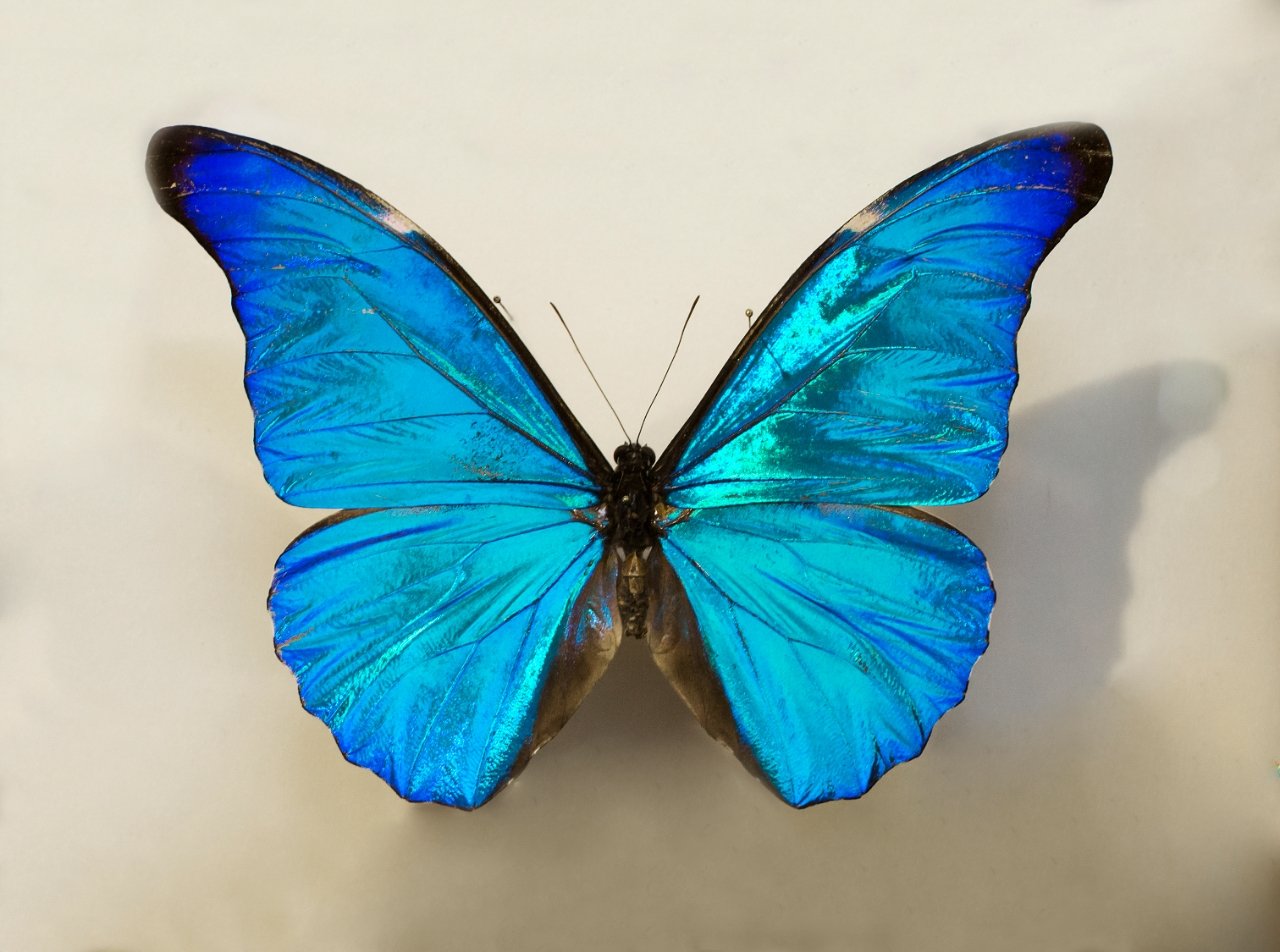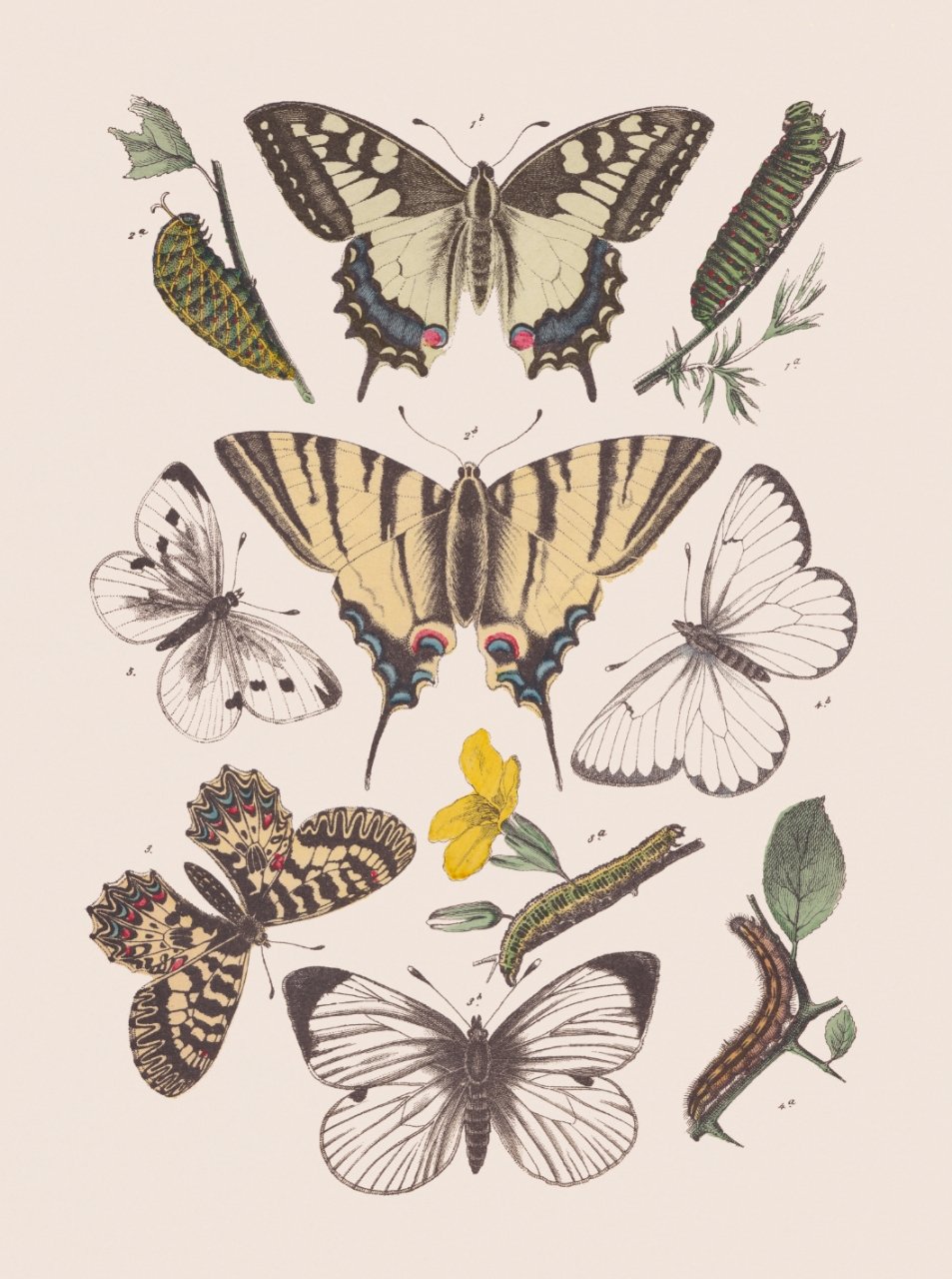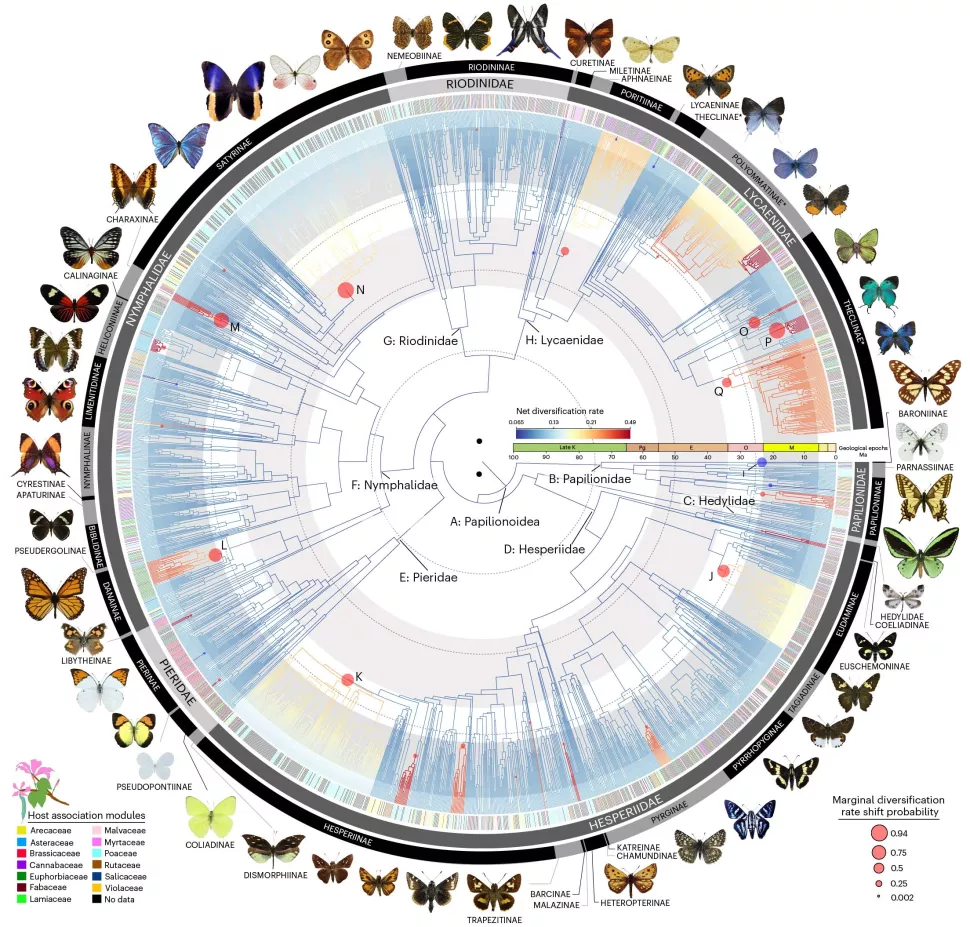The butterfly is one of the most beautiful and beloved insects in the world, but little is known about where they originated from and how they evolved.

Recently, scientists have reconstructed the largest butterfly tree of life ever, which has brought new insights into the ancestry of these creatures.
This research has shown that the first butterflies evolved from ancient moths in North America approximately 100 million years ago.
Pangaea, the supercontinent, was breaking apart at the time, and North America was split in two by a seaway separating the East and West. Butterflies originated on the western edge of this continent.
It is estimated that there are currently 20,000 different species of butterflies, and you can find them across every continent other than Antarctica. Although scientists knew when butterflies originated, they were still unsure about the region they emerged from and their earliest diet.
The scientists, led by Akito Kawahara, curator of Lepidoptera (butterflies and moths) at the Florida Museum of Natural History, built the new butterfly tree of life by sequencing 391 genes from over 2,300 butterfly species from 90 countries, accounting for 92% of recognized genera.

The researchers compiled data from multiple sources into a single publicly available database. They used 11 rare butterfly fossils as a standard to make sure that the branching points of their tree of life matched the time period of branching displayed by fossils. “It’s the most difficult study I’ve ever been a part of, and it took a massive effort from people all over the world to complete,” according to Kawahara.
The findings, published on May 15 in the journal Nature Ecology & Evolution, demonstrate that butterflies evolved from nocturnal herbivorous moth predecessors roughly 101.4 million years ago. This places the first butterflies in the mid-Cretaceous, making them dinosaur contemporaries.
Butterflies evolved and spread across what is now South America. Some traveled to Antarctica, which at the time was warmer and remained connected to Australia. They had arrived in the northernmost point of Australia when the two landmasses parted, a process that began some 85 million years ago.
The butterflies then crossed the Bering Land Bridge, which originally connected Russia and North America, and arrived in what is now Russia 75-60 million years ago.

They then migrated to Southeast Asia, the Middle East, and Africa’s Horn of Africa. They even made it to India, which was then an isolated island, some 60 million years ago.
Surprisingly, the expansion of butterflies stalled at the edge of the Middle East for 45 million years until ultimately expanding into Europe around 45-30 million years ago for unexplained causes. According to Kawahara, the low number of butterfly species in Europe now compared to other regions of the world reflects this hiatus.
An examination of 31,456 records of butterfly host plants found that the initial butterflies dined on legume plants. Legumes are prevalent in practically every ecosystem, however, the majority of them lack powerful protective compounds against insect feeding. Scientists believe that these characteristics are what have kept butterflies on a legume diet for millions of years.
Today, butterflies eat plants from several plant families, but the majority cling to a single plant family. Approximately two-thirds of all living species graze on a single plant family, primarily the wheat and legume families. Surprisingly, the most recent common ancestor of legumes is approximately 98 million years old, which roughly corresponds to the origin of butterflies.
In conclusion, the world’s biggest butterfly tree of life has allowed scientists to reconstruct the fascinating evolutionary history of butterflies. It is incredible to think that the first butterflies evolved 100 million years ago in what is now Central and North America.
The study provides us with a wealth of information about the evolutionary history of butterflies and moths and helps us better understand the diverse and beautiful creatures that we see fluttering around us.
As we continue to learn more about their history and their current habitats, we can work towards protecting and preserving them fOr future generations to enjoy.




